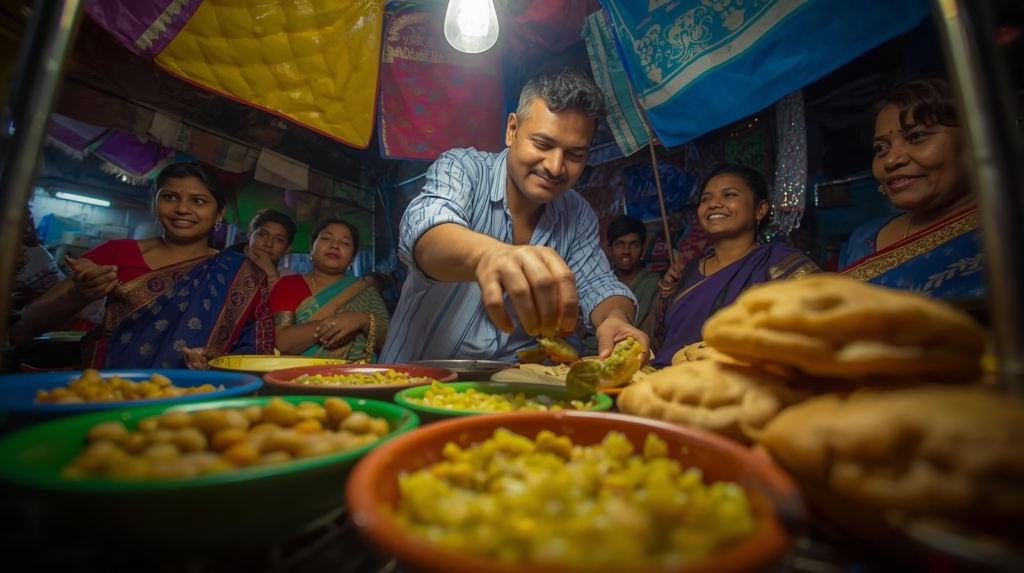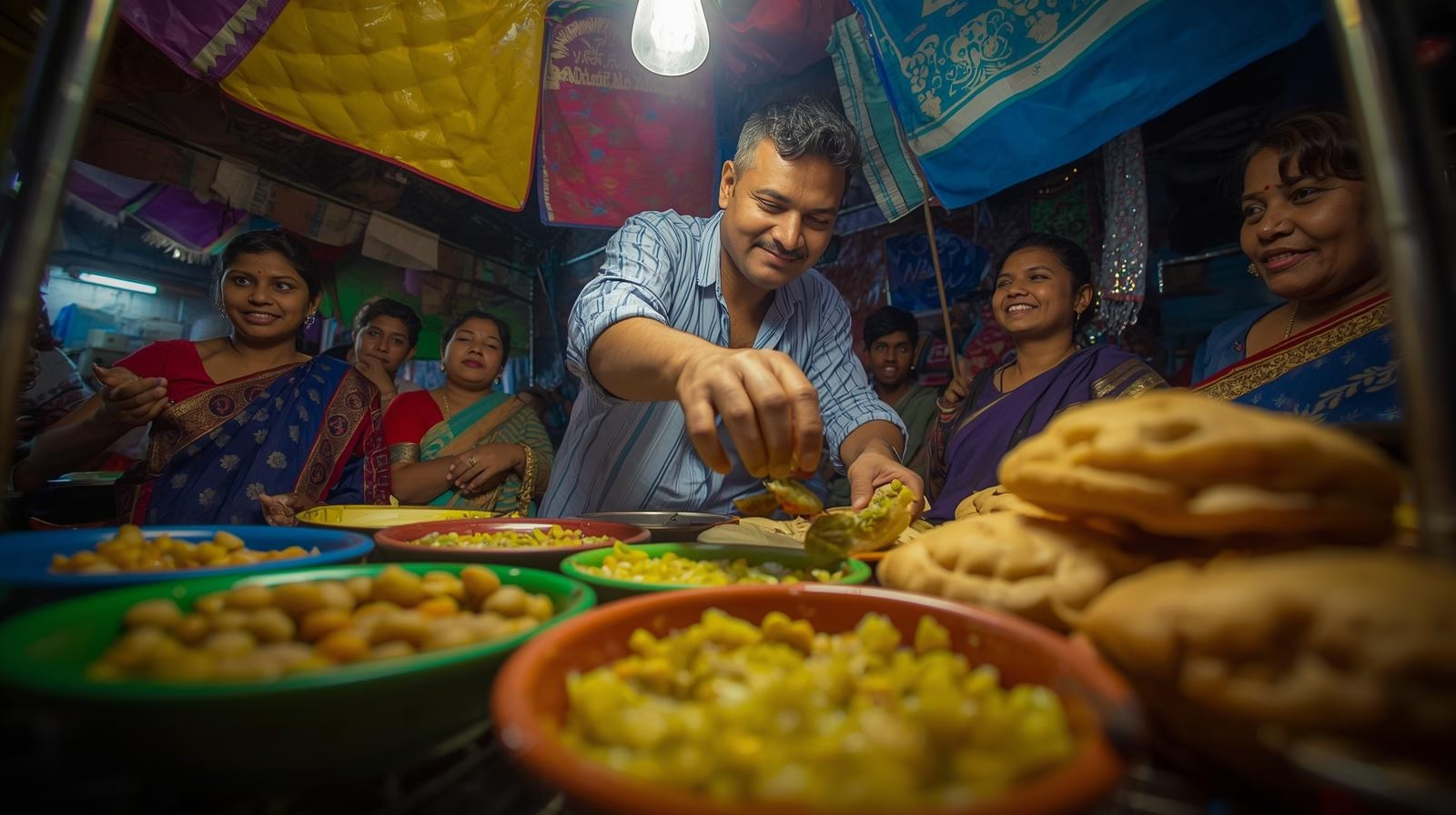
What is a Pani Puri Business? Introducing The Magic of Pani Puri
Pani puri also called golgappa, phuchka, or gupchup depending on the region is one of India’s most iconic street foods. It’s not just a snack it’s an experience. The crisp puri, the burst of tangy, spicy, and sweet water, and the joy of eating it fresh from the vendor’s hands make it a cultural phenomenon.
Across India, the pani puri vala is a familiar figure from Mumbai’s Marine Drive to Delhi’s Connaught Place, from Pune’s FC Road to Kolkata’s Park Street. And behind that humble cart lies a surprisingly profitable business model.
For aspiring entrepreneurs, starting a pani puri stall is a low-investment, high-demand street food business in India that can deliver quick returns and long-term growth. In this guide, we’ll cover everything from setup costs and licensing to marketing strategies, income potential, and a real life case study.
Why Start a Pani Puri Stall in India?
- Low Startup Cost: ₹25,000–₹50,000 is enough to begin.
- High Footfall Potential: Popular in cities like Mumbai, Delhi, Kolkata, Pune, and small towns alike.
- Quick ROI: Break-even possible within 1–2 months in a busy location.
- Scalable Model: Start with a cart, expand to kiosks or franchises.
Step-by-Step Guide to Starting Your Pani Puri Stall.
1. Market Research
- Identify your target audience: college students, office-goers, families.
- Observe competitors: What flavors do they offer? What’s their pricing?
- Test your recipe with friends and family before launching.
2. Investment & Setup
| Item | Estimated Cost (₹) |
|---|---|
| Cart/Stall | 10,000–20,000 |
| Utensils & Containers | 2,000–5,000 |
| Initial Ingredients | 3,000–6,000 |
| Licenses & Permits | 2,000–5,000 |
| Marketing & Branding | 5,000–10,000 |
| Total | 25,000–50,000 |
3. Licenses & Legal Requirements in India
- FSSAI Registration (mandatory for food businesses)
- Municipal Trade License
- Shop & Establishment License (if fixed location)
- GST Registration (if turnover exceeds ₹20 lakhs/year)
4. Choosing the Right Location
- Near schools, colleges, IT parks, or busy residential areas.
- Ensure visibility and easy access.
- Look for spots with evening footfall.
5. Menu Ideas to Stand Out
- Classic pani puri
- Flavored pani (mint, garlic, jeera, sweet)
- Add-ons: dahi puri, sev puri, bhel puri
- Hygiene-focused service (gloves, filtered water, fresh ingredients)
6. Marketing Strategies
- Post short videos on Instagram Reels & YouTube Shorts.
- List your stall on Google Maps.
- Offer loyalty cards or “Buy 5 plates, get 1 free” deals.
- Collaborate with local food bloggers.
How Much Can a Pani Puri Stall Earn in India?
- Average price per plate: ₹20–₹40
- Plates sold per day: 150–300 (in a good location)
- Daily revenue: ₹3,000–₹9,000
- Profit margin: 40–60%
- Monthly profit: ₹30,000–₹80,000
Ananya Pani Puri Stall, Goa
Deepak Vishwakumar, originally from Varanasi, started Ananya Pani Puri in Pilerne, Goa, 12 years ago with just a small cart.
- Initial Offering: Only pani puri.
- Today: 13 snack varieties including bhel puri, sev puri, and papdi chaat.
- Success Factors:
- Consistent taste and hygiene.
- Expanding menu based on customer feedback.
- Strategic location in a busy neighborhood.
- Challenges Faced:
- COVID-19 reduced footfall.
- Rising ingredient costs due to inflation.
- Adapting to changing customer preferences (healthier options).
Outcome: From a small cart to a spacious, well-known stall with loyal customers and steady income
Starting a pani puri stall in India is a profitable, low-risk food business with massive customer appeal. With the right location, hygiene, and marketing, you can turn a humble cart into a thriving brand.
From a single cart in a busy street to a chain of outlets across the city — the journey is possible if you combine great taste with smart business practices.
Frequently Asked Questions
Q: How much does it cost to start a pani puri stall in India?
A: Around ₹25,000–₹50,000, depending on location and setup.
Q: Is a license required for selling pani puri?
A: Yes, FSSAI registration and local municipal permits are mandatory.
Q: How profitable is a pani puri business?
A: In a busy area, monthly profits can range from ₹30,000 to ₹80,000.
Q: Can I expand a pani puri stall into a bigger business?
A: Yes, many vendors grow into kiosks, shops, or franchises.


Leave a Reply